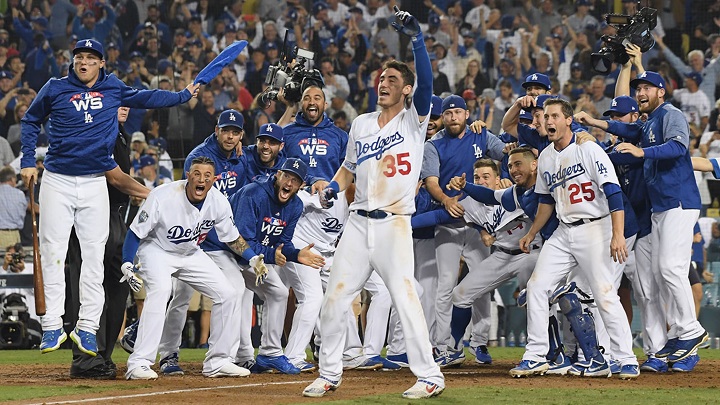What is an Inning in Baseball?

Before diving into the number of innings in a baseball game, it’s essential to understand what an inning is. An inning is a segment of play in which one team bats and tries to score runs, while the other team plays defense and tries to prevent runs. Each inning consists of two halves: the top half and the bottom half.
- Top Half: The visiting team bats first during the top half of the inning. They aim to score runs until three outs are made.
- Bottom Half: Following the top half, the home team gets its chance to bat in the bottom half of the inning.
The inning concludes when both teams have had their turn to bat, and three outs have been recorded against the batting team.
Standard Length of a Baseball Game
In Major League Baseball (MLB), a standard game consists of nine innings. This structure is primarily what distinguishes baseball from other sports, such as basketball or football, which use a clock to determine game length. In baseball, time is less relevant than the number of innings played.
The Nine-Inning Game
- Structure: Each of the nine innings allows both teams a chance to bat and play defense. This creates a rhythm throughout the game as teams alternate between offense and defense.
- Winning the Game: The team with the most runs at the end of nine innings is declared the winner. If the game is tied after nine innings, it can proceed into extra innings.
Extra Innings
In situations where the score is tied at the end of nine innings, baseball games can go into extra innings. Here’s what you need to know about extra innings:
- Continuous Play: Extra innings follow the same structure as the standard nine innings, with each team getting a chance to bat until one team scores more runs than the other at the end of an inning.
- Determining a Winner: The game continues until one team has a lead at the end of an inning. There is no fixed limit to how many extra innings can be played, although games have been known to last for hours due to extended play.
Variations in Innings by Level of Play
While nine innings is the standard for Major League Baseball, different levels and formats of the game may have variations in innings.
Minor League Baseball
In Minor League Baseball, the standard game length remains nine innings, but there can be exceptions, particularly in doubleheaders. A doubleheader is when two games are played in one day, and in many cases, these games are shortened to seven innings each to accommodate scheduling.
College Baseball
In college baseball, games typically consist of nine innings as well, but there can also be variations. Some collegiate leagues or tournaments may utilize seven-inning games to manage player fatigue and scheduling constraints.
Youth and Amateur Baseball
In youth baseball, the number of innings can vary significantly based on age and league rules. Here are some common structures:
- Little League: Games often consist of six innings to keep the pace engaging for younger players and to accommodate shorter attention spans.
- High School Baseball: Most high school games are played over seven innings, offering a middle ground between youth leagues and professional levels.
Understanding the Importance of Innings

Innings are a crucial aspect of baseball, serving not only as a method of timekeeping but also as a means to build drama and excitement. Each inning can bring a swing in momentum, and the strategic decisions made during each inning can significantly impact the game’s outcome.
Strategy in Innings
- Pitching Changes: Teams often analyze matchups based on the current inning, using different pitchers to exploit the opposing team’s weaknesses. This can mean bringing in relief pitchers in later innings to maintain a lead or preserve a tie.
- Batting Order: Coaches and managers plan batting orders with the innings in mind. The lineup is often designed to maximize scoring potential during crucial innings, especially in the late innings when the game is on the line.
Game Flow and Momentum
The flow of the game can be heavily influenced by the inning:
- Early Innings: Teams often feel out their opponents and set the tone. The beginning of the game can be slower as both teams assess the strengths and weaknesses of the other.
- Late Innings: The tension typically ramps up in the final innings. Teams that are trailing may become more aggressive in their approach, leading to exciting plays and dramatic moments.
Historical Context of Innings
The tradition of playing nine innings in baseball has its roots in the history of the game. When baseball began to take shape in the 19th century, games were often played over varying lengths, but the nine-inning structure became standardized as the sport gained popularity.
Evolution of the Game
- 19th Century: Early versions of baseball had no fixed inning lengths, with some games lasting several hours or more without any defined structure.
- Standardization: As baseball became more organized and popular, the nine-inning game structure was formalized, providing consistency across leagues and ensuring fairness in competition.
Other Formats of Baseball
While the nine-inning game is the most recognized format, there are other variations and formats of baseball that utilize different inning structures.
Softball
In softball, games typically consist of seven innings. This shorter format caters to the faster pace of the game and the nature of play, making it more suitable for the sport.
Tournaments and Special Events
In various baseball tournaments, especially youth leagues, teams might play shortened games, often consisting of five innings to keep games moving quickly and maintain engagement.
The Significance of Innings in Baseball
The number of innings in baseball—most notably nine—serves as the backbone of the game’s structure. It creates a rhythm that governs the flow of play, strategy, and competition. Whether in Major League Baseball, college, or youth leagues, understanding the concept of innings is essential to grasping the beauty and intricacies of baseball. As the sport continues to evolve, the tradition of innings remains a cherished aspect that connects fans and players alike to the rich history of baseball.
Whether you’re a casual viewer or a dedicated fan, recognizing the significance of each inning can enhance your appreciation for the game, making every moment of play that much more exciting. So next time you watch a baseball game, remember: it’s not just about runs; it’s about the innings that lead up to those moments of glory.







